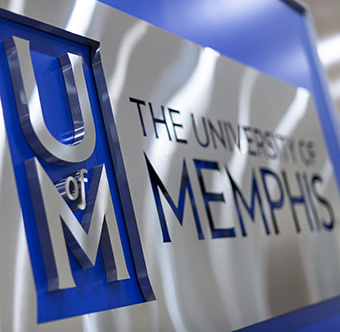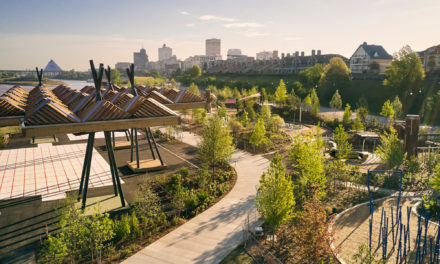As Memphis works to transition from the workforce of the 1980s to one that can compete in a twenty-first-century economy of innovation and technology, the University of Memphis will be instrumental in whether we succeed.
Although the innovation that produced the most media coverage was when the university hired a high school coach, albeit an NBA legend, to head its men’s basketball program, it is working even harder these days to develop a culture of innovation recognized for disrupting expectations.
After all, the university influences almost every aspect of our regional economy: the base of knowledge, an educated workforce, breakthroughs in new ideas, and research that builds a tech cluster that attracts entrepreneurs and innovators to Memphis.
The emphasis on innovation could not come at a better time, because the test for Memphis is whether it can leverage its current momentum to address longtime structural issues. For example, between 2005 and 2017, the Memphis metro went from 47th to 48th among the 50 largest Metropolitan Statistical Areas (MSA) for their shares of creative workers. When compared to peer cities, the Memphis region has the lowest median household incomes, a higher unemployment rate, lower jobs growth rate, and more expensive business incentives.
While the University of Memphis’ emphasis on innovation will never get the headlines devoted to Penny Hardaway, that’s not saying it doesn’t deserve them. Most recently, the new University of Memphis Research Foundation (UMRF) Research Park opened at 460 South Highland Street in a 60-year-old city library building and jettisoned its cumbersome name, CommuniTech.
The park’s opening was the first phase in a plan that will be followed by an applied research facility at the Park Avenue campus later this year and a third phase focused on attracting public-private partnership enterprises. The University says its ultimate goal is “strengthening its role as a research-based driver of economic development in the region.”
It’s an ambitious objective, considering that the university has been pursuing a stronger role in innovation research since the opening of FedEx Institute of Technology 16 years ago and the subsequent creation of six research innovation clusters as well as the Office of Technology Transfer, which has now received about 40 patents, including a record 10 in the past year.
In the end, it’s all about creating an ecosystem, according to Jasbir Dhaliwal, the university’s executive vice-president for research and innovation. That’s why the school, in a new partnership with entrepreneur facilitator Epicenter, has established a postdoctoral fellowship program called Patents2Products. Its goal is to create six new SweetBio-type ventures in the next year. SweetBio is a medical device startup that developed a dissolvable membrane derived from honey that can promote healing after oral surgery.
A missing piece of the ecosystem — as a result of too little funding from the state of Tennessee — is the critical mass of graduate students engaged in research, which translates into fewer graduates for companies to hire and who stay in Memphis for their own startups.
It’s a tall order, particularly in the pivotal way that international students factor into the ecosystem. While the University of Memphis counts its international students in the hundreds, the University of Cincinnati counts theirs in the thousands. Dhaliwal says that if the university had a thousand more doctoral students, it could transform the high-tech landscape and put Memphis into the national spotlight.
Attracting more of these students, who number a million in the United States and contribute $39 billion to the national economy, has become harder because foreign student enrollment is declining as federal government immigration policies and rhetoric suggest they are not welcomed.
As Dhaliwal points out, even if the international students enroll at the U of M and return to their home countries, they spread the word about the university, and if they start a company there and are looking for a U.S. office, they know about Memphis.
To fuel this ecosystem, the goal is for U of M to become a Carnegie Research 1 university (top level) within five years, joining the elite institutions with “very high research activity.” “We don’t have a choice,” says Dhaliwal. “Education is competitive and our peer schools are R1 schools. Being internationally recognized allows us to attract students from all over the world. It also attracts companies to make investments. Many people don’t realize we’re in a key competitive business.”
That said, it seems that the university’s pragmatic and practical approach reflects the character of Memphis itself. “We don’t want to be an ivory tower university cut off from the city,” he says. “We want to engage in research that helps the city and breaks down the ivory tower mindset so we can support the local economy and make our workforce nationally competitive as well.”
Success begets success and the more the University of Memphis can build this sophisticated ecosystem, the stronger and more competitive the Memphis economy can be. That’s a town-gown relationship that could make an NCAA basketball championship pale in comparison.
This was previously published in the most recent issue of Inside Memphis Business.





David Rudd is the best thing to happen to U of Memphis (and maybe Memphis) in a very long time. Cheers to him and his team for continuing to make big, important, sustaining moves to make Memphis more successful.
There have been several reports on this growing initiative by the University of Memphis. It has been a goal of the University for many years — getting there has always been hard. Academic research and community needs are hard to integrate — each has their own set of incentives and rewards and often they are not compatible.
But is important to remember that the real contribution of the University to the community is trained/educated workers. Most people do not realize that the University graduates around 3,000 people with bachelors degrees each year. I am guessing that a large portion stay in Memphis, work in Memphis, and help raise the standard of living for all Memphians. In addition, the University grants almost 1,000 masters degrees each year. The masters degree tends to be specialized — it is the degree of the creative class. Finally, the University grants around a 150 doctorates each year. These graduates usually move to other cities working for other Universities, government or large corporations, spreading the word that Memphis is a good place to go to school.